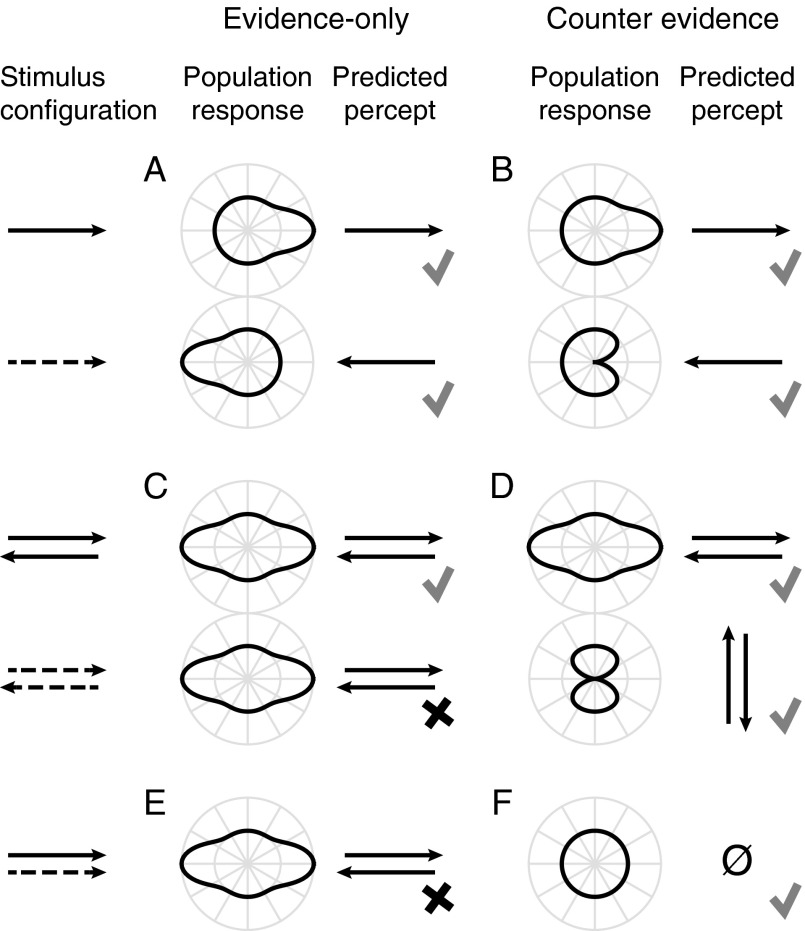Figure 1.
(A) The evidence-only hypothesis predicts that the population response curve to inverting-contrast motion (dashed arrow) is the same but 180° rotated compared with the curve for constant-contrast motion in the same direction (solid arrow). (B) The counterevidence hypothesis predicts that the response to inverting-contrast motion has a trough where the peak is for constant-contrast motion. Through opponency (e.g., by taking the vector average of the population response) both models correctly predict the phi and reverse-phi motion percepts (indicated with check marks). (C‒F) Review 2 psychophysical experiments by Bours et al. (2007). (C) Evidence-only predicts a horizontal transparency percept in displays of overlapping left and right motion of inverting-contrast. (D) However, observers perceived motion that was orthogonal to the 2 components. (E) According to evidence-only, 2 rightward motion components—one of constant contrast, the other inverting—are perceived as horizontal transparent motion. (F) Instead, observers perceived no net motion in such a stimulus. (C‒F) These observations are consistent with the use of counterevidence (check marks) but not with the evidence-only hypothesis (x marks).

